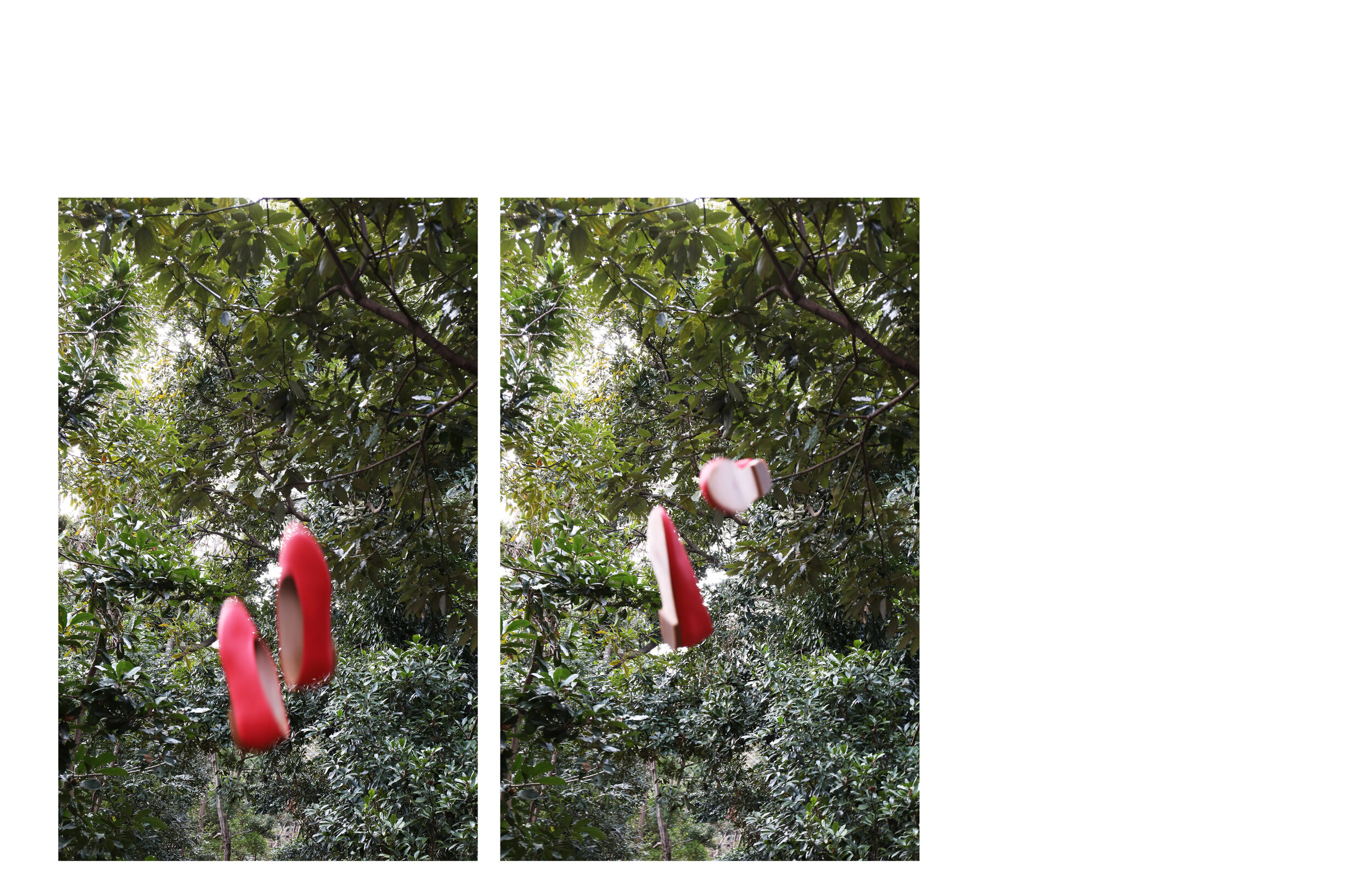a conversation with _FOT
originally published in her. magazine volume 08
Direction _ Mari Kishi
Photography _ James Oliver
Design _ Hiroya Kadono
A Conversation with Ayumi Otsu and Hiroki Yamashita
Japanese shoemaker Ayumi Otsu first captured my attention when she launched her own label with the distinctive idea of Incorporating wooden design throughout her line. Launched in 016, _ Fot is now well established and is continuing to define itself in this hugely competitive market, so I wanted to dive into what is behind the wood. We decided to travel down to Shiga together to pay Hiroki Yamashita a visit and look into his very humble workspace that is attached to the back of his house. We had a nice, informative chat focusing on the relationship between food enthusiast Yamashita and designer Otsu.
Ayumi Otsu: I wanted to make use of Yamashita's skills and techniques as a furniture maker, so asked him if he could apply them to creating shoes and bags for _ Fot. I would think that product making would involve many detailed tasks, such as making heels of shoes and so on.
What is the biggest difference from furniture making?
Hiroki Yamashita: The difference from furniture making is that the material of the original wood is very thin. For example, there is a curved piece of wood under the bag, which is laminated in the same way as furniture. Unfortunately, by using the glue that I normally use, it doesn't stick and there will always be a gap caused by adhesion failure. One way to fix it is to harden it using vacuum pack, you use this method when you are making a backboard for a chair for example it's like a futon compressing bag. That was my first challenge.
Ayumi Otsu: Yes it was. It was an ongoing trial and error. It was never going to be the way we expected.
Hiroki Yamashita: So, for the next time, I tried bonding using a solid mould method. This way, the bonding worked; however, it became distorted after drying. The woodworking bond is moist and when it's completely dry, it's a mess. The twist becomes stronger with time. I think a component of the adhesive was causing this issue, so I tried several types of adhesives. Even with the lamination method, where several layers of veneer are made at the bottom of the bag, there will always be a certain amount of bending back (spring-back) then it's folded or bent. There Isn't a problem if the bent wooden parts are attached to some kind of structured object like furniture; however, if like on a bag or with accessories, it doesn't have this kind of support, it is more likely to bend back and twist. No matter how thick or thin they are, wooden boards have a front and back, and many other parts, so they all have their own character in terms of the direction of curvature. Therefore, I do everything I can think of when tacking boards, such as deciding the front or back sides as well as the stacking order. This is done by looking at the balance based on the wood's character one by one to avoid warping and twisting as much as possible. Stacking is not simply piling up boards.
Ayumi Otsu: Also, earrings and small accessories were a lot of work. The process is more difficult because of the tightness of the R's, which is not normally used in furniture.
Hiroki Yamashita: The directions in which the wood fibre runs are important for getting nice ends, but the wood will also break if it is bent the other way. There is a breaking point that you can bend the wood up to but the smaller the product is, the harder it is to process.
yumi Otsu: It's because of Yamashita's deep understanding of the nature of wood that _ Fot's products are so well-made.
Writer_ Mari Kishi














